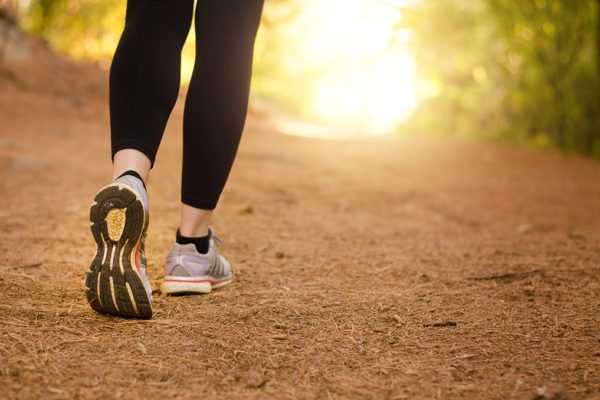Knee pain is one of the most common complaints across all age groups. As injuries occur, people tend to become inactive… and stay inactive. Unfortunately, prolonged inactivity contributes to a myriad of health concerns including cardiovascular and metabolic diseases, muscle and bone weakness, weight gain, and increased difficulty in returning to an active lifestyle. Instead of allowing your knee injuries to keep you away from the action, find alternative ways to stay moving!
The good news is you have options.
Option #1: If you can’t perform your cardio activity of choice, choose a new one! There are many knee friendly cardio options such as biking, elliptical, stairmaster, swimming, and brisk walking. Some methods are friendlier on the knee joint than others, so be sure to ease carefully into the new activity to make sure it is the right choice for you.
Option #2: If cardio just isn’t an option for you, pick up some dumbbells. The American College of Sports Medicine recommends 2-3 days of weight lifting to improve overall strength and prevent loss of muscle mass. Avoid weight lifting exercises that may bother your knees and stick to the ones that are pain-free!
Option #3: Exercise other body parts besides the one that hurts. Knee injuries can be overwhelming, and it is tempting to wait to heal and become sedentary. However, there are a lot of simple exercises you can do that don’t involve the knee joint. Push ups, sit ups, planks, calf raises, and glute exercises are all great basic exercises that you can even do at home. Circuit training is an easy way to increase the intensity of seemingly simple exercises by picking a set of exercises and rotating through each one without rest. (Example: 25 crunches, 15 push ups, 1 minute plank, 25 calf raises, 30 second rest. Repeat!)
Option #4: Find little ways to add more activity throughout the day. If scheduled exercise is no longer an option for you, try squeezing in extra steps and movement whenever you can. Here’s how: opt to take the stairs; park far away from building entrances; occasionally walk around the office; take the long way to the bathroom or water fountain; and, walk and talk during your conference call instead of sitting at your desk. You can even take advantage of the extra time to do activities around the home such as cleaning and vacuuming, gardening or mowing the lawn.
Don’t let your knees knock you down! Find something else to do until you can get back on your feet. Continuing an exercise program will help to keep the metabolism and energy levels high, prevent weight gain, and make returning back to your original activity much easier.
Resources:
Acsm.org
About the author:
Jinelle Jagoda, M.S.
Jinelle received her undergraduate degree in Exercise Physiology at Baylor University and her Master’s Degree in Clinical Exercise Science at George Washington University. While in school, Jinelle worked as a graduate assistant in the exercise physiology lab at GWU, and taught yoga and Mat Pilates classes. After graduating with her M.S. degree, she moved back to California with her husband and worked in sports medicine physical therapy prior to starting at BaySport. She is also a certified ACSM Clinical Exercise Physiologist, ACSM Group Exercise Instructor, and 200 HR Registered Yoga Teacher. In her free time, Jinelle enjoys teaching yoga classes, running, rock climbing and backpacking!


